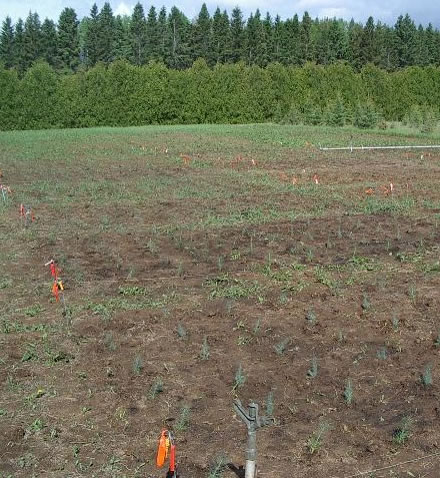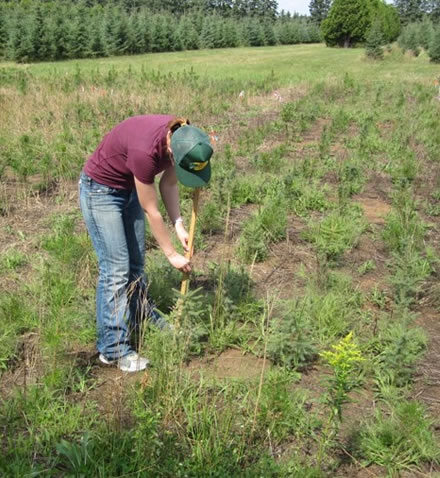25th Sideroad Nursery wood ash trial

Location
Northwest Ontario
Ecozone: Boreal Shield
Elevation: 215 m
Climate
1981 to 2010 monthly climate point estimates generated from the Natural Resources Canada climate modeling project.
Mean annual precipitation: 694 mm
Mean minimum temperature in January: −19.2°C
Mean maximum temperature in July: 23.8°C
Site description
This site was established on a former tree nursery. The soils developed on fluvial outwash and have a sandy loam texture. They are Orthic Eutric Brunisols with no forest floor layer because the site had been repeatedly tilled.
Ash description
The ash used at the 25th Sideroad Nursery wood ash trial was produced in a vibrating grate power boiler. The ash feedstock was primarily softwood bark, sawdust, and wood chips, with 8 to 14% secondary effluent sludge waste from pulp and paper production. Two types of ash were applied: (1) fine-textured, grey, low-carbon fly ash; and (2) coarse-textured, black, high-carbon biochar-like ash. The biochar-like ash was produced at a lower temperature. Neither ash type was pretreated before application, but the biochar-like ash had been stored outdoors for 3 years.

Seedlings growing on 25th Sideroad wood ash trial plots.

Tree sapling height being measured on 25th Sideroad wood ash trial plots.
Treatment description
In May 2012, nine ash and biochar treatments were applied using an experimental design to look at both the individual and combined effects of fine-textured ash and biochar-like applications. Treatments included (1) 0 Mg low-carbon ash per ha, 1 Mg low-carbon ash per ha, or 10 Mg low-carbon ash per ha; and (2) 0 Mg biochar per ha, 1 Mg biochar per ha, or 10 Mg biochar per ha. The quantity of ash applied (Mg per ha) was calculated based on the dry weight of the ash, and the ash was applied by hand and raked into the soil surface. Treatments were replicated 5 times when the study was set up. Immediately following treatment application, half of each plot was planted with white spruce (Picea glauca (Moench) Voss) or black spruce (P. mariana (Mill.) BSP) seedlings. The border of each plot was planted with jack pine (Pinus banksiana Lamb.). Seedlings were planted at a density of 25,600 stems per ha.
Monitoring
Monitoring treatment effects on trees, understory vegetation, soil chemistry, and soil microbes is ongoing. Data being collected include:
- Trees
- Survival and health
- Height and diameter
- Foliar nutrients
- Soil chemistry
- Acidity (pH) and electrical conductivity
- Total carbon, nitrogen, sulphur, cations, and trace elements
- Exchangeable cations
- Available phosphorus
- Nitrogen mineralization
- Soil microorganisms
- Microbial biomass and respiration
Main contact
Amanda Diochon, Associate Professor, Department of Geology, Lakehead University
Page details
- Date modified: